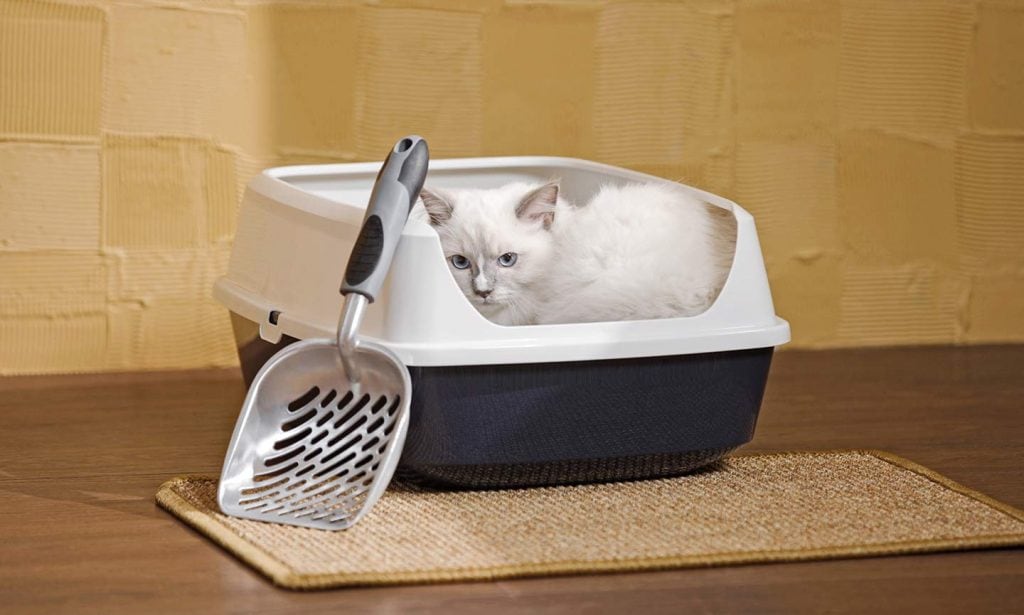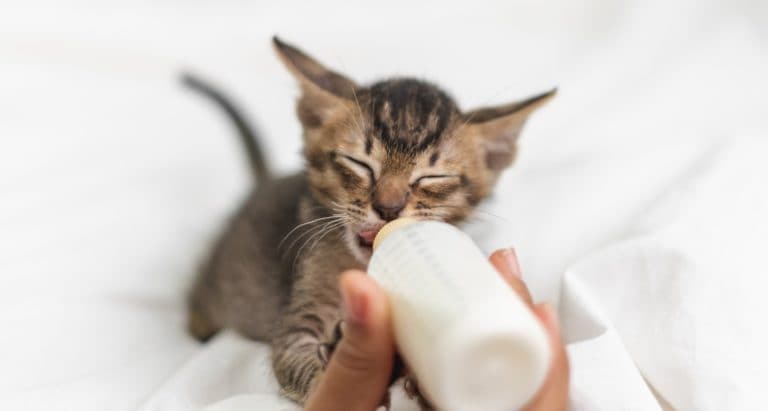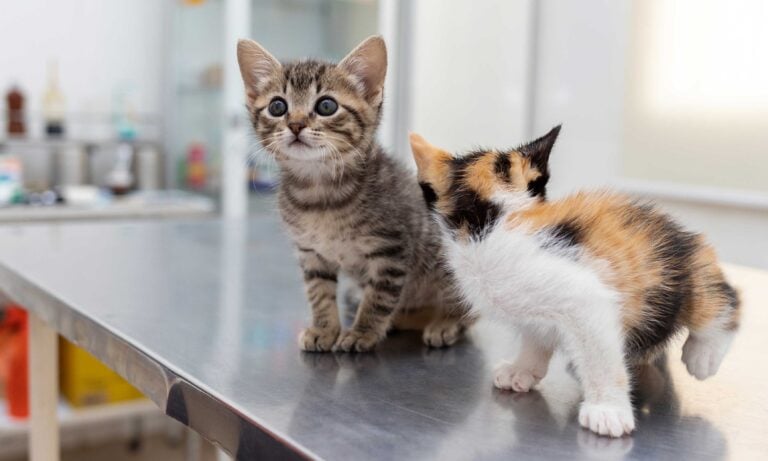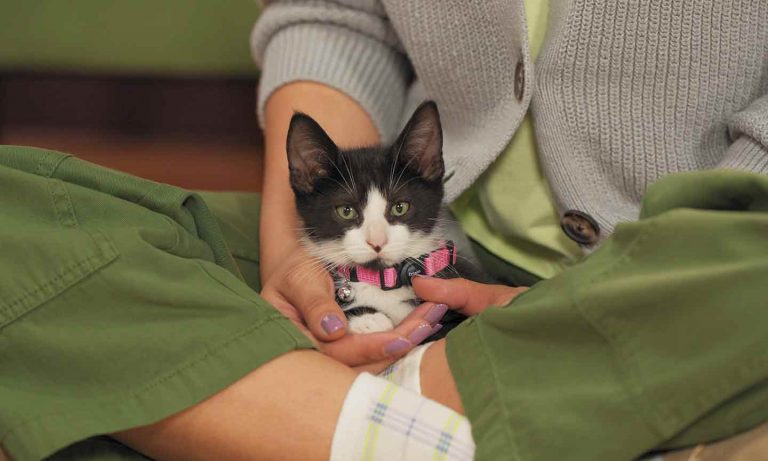When it comes to potty training their pet, cat parents usually have it easy. Kittens are inherently inclined to use a litter box, which makes learning how to litter train a kitten pretty straightforward.
Unlike puppies who require ongoing house training, most kittens have an innate desire to cover their waste and will seek out loose material—like dirt or scoopable litter—on their own. Plus, young kittens are quite smart when it comes to finding the prime place to do their business. In many cases, they’ll watch their mom use a litter box and promptly follow suit.
Still, a gentle nudge in the right direction can make a big difference when it comes to litter training kittens. It’s important to equip your kitten with the proper supplies, place their box in a convenient place, and use kitten litter that attracts them to the box itself. It also helps to show them where the litter box is and keep it in the same place, so they always know where to go.
We spoke to several cat experts to find out how to litter train a kitten. Read on to find out everything you’ll need to know to help your kitten achieve litter training success.
Click the buttons below to jump to each section:
When to Start Litter Training
Kittens are usually ready to begin litter training once they start weaning from their mother and eating solid food, which is around 3 to 4 weeks. By the time a kitten is an adoptable age—usually between 8 to 12 weeks of age—they are more than ready to use the box.
“It takes a little bit of encouragement, but they will naturally start to wander over to the litter box,” says Jackson Galaxy, a cat behavior and wellness expert and former host of Animal Planet's “My Cat From Hell.” “It's all about patience and persistence, and remembering that they are not going to be perfect at it every time.”
How to Litter Train a Kitten: A Step-by-Step Guide
Follow these four simple steps to set your kitten up for litter box success.
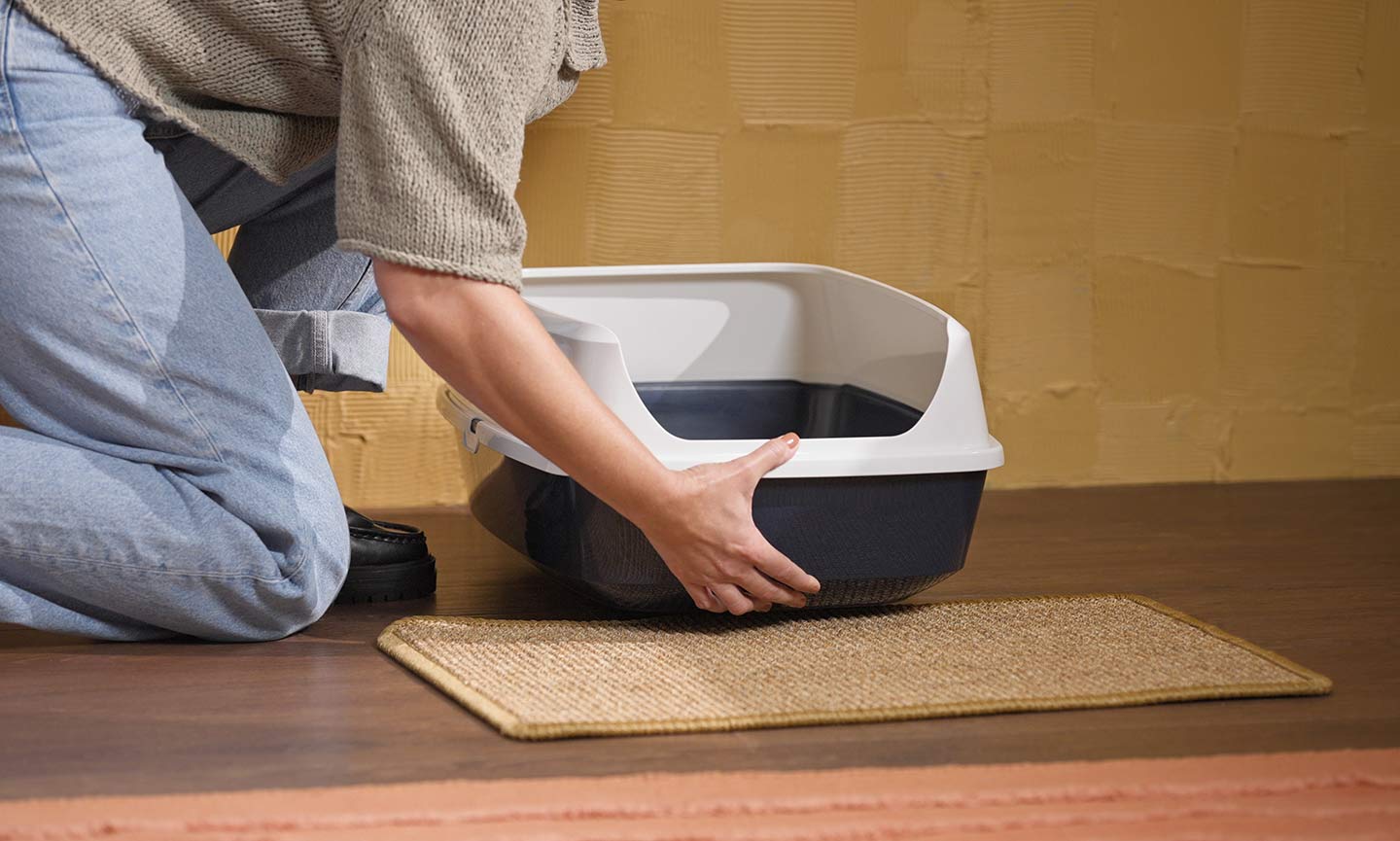
What You’ll Need to Litter Train a Kitten
You only need a few materials to litter train a kitten:
- Kitten litter box
- Kitten litter
- Scooper that allows you to sift waste from the box
- Plastic or compostable bags to place the waste
Choosing the Right Litter Box
Consider these tips as you’re deciding on a litter box:
- Look for a small, shallow box: A litter box with low sides, like the Van Ness Cat Litter Pan, is ideal when litter training kittens. Low walls allow your cat to easily climb inside. Bigger and taller boxes may be a bit too much of a hop for young kittens, potentially deterring them from using the box. “You can even cut away the front part of a litter box just to make it easier for them,” says Galaxy.
- Avoid covered boxes: Covered litter boxes can trap odors inside, which might be great for you but can deter your kitten from using them. Plus, they can be scary for some kittens, especially if you have other cats who may guard or ambush the box. So keep it small and uncovered for now—you can always upgrade to a larger size as your kitten grows.
- Multiple cats means multiple boxes: “Ideally, you should have one litter box per cat plus one extra,” says Trish McMillan, a certified animal behavior consultant in Mars Hill, North Carolina. “Some cats like one box for pee and one for poop, and some cats will guard the litter box from other cats—a logistic impossibility with the one extra box.” Remember: It is far better to have to scoop multiple boxes than to have your kitten choose another place to go, like your bed or your bathmat.
Choosing the Right Litter
In general, cats prefer finely grained, unscented clay litter. As you begin your kitten litter box training journey, McMillan recommends using a special kitten litter, such as Dr. Elsey's Kitten Attract Clumping Clay Cat Litter. Kitten litter contains special pheromones that help young kittens locate the litter box.
Do not use litter box liners, McMillan adds. Your kitten can easily catch their claws on liners, which can be frustrating and even painful—both of which can deter them from returning to the litter box the next time they need to go.
1 Choose Where to Put the Litter Boxes
When it comes to litter training, location is everything. Cats like privacy and easy access, so a spot in a low traffic area that’s effortless to find and step into are best. Many pet parents put litter boxes in their bathroom, a quiet corner of a bedroom or living area, or a closet with the door open.
If you have multiple floors in your home, McMillan recommends putting a litter box on each floor—that way, your cat won’t have to climb the stairs when it’s go-time. Again, it’s all about making this as easy as possible for your kitten.
The space should feel safe to your kitty, with plenty of visibility so they can monitor their surroundings as they go. (Going to the bathroom puts your kitten in a vulnerable position, so you’ll want to make sure they feel comfortable letting their guard down.)
Finally, do not place litter boxes next to your kitten’s food dishes. Hey, would you want to eat every meal right next to your toilet? Neither does your kitten. For sanitary reasons as well as general cat fussiness, you’ll want to keep the litter box and their feeding station in two distinct, separate parts of your home.
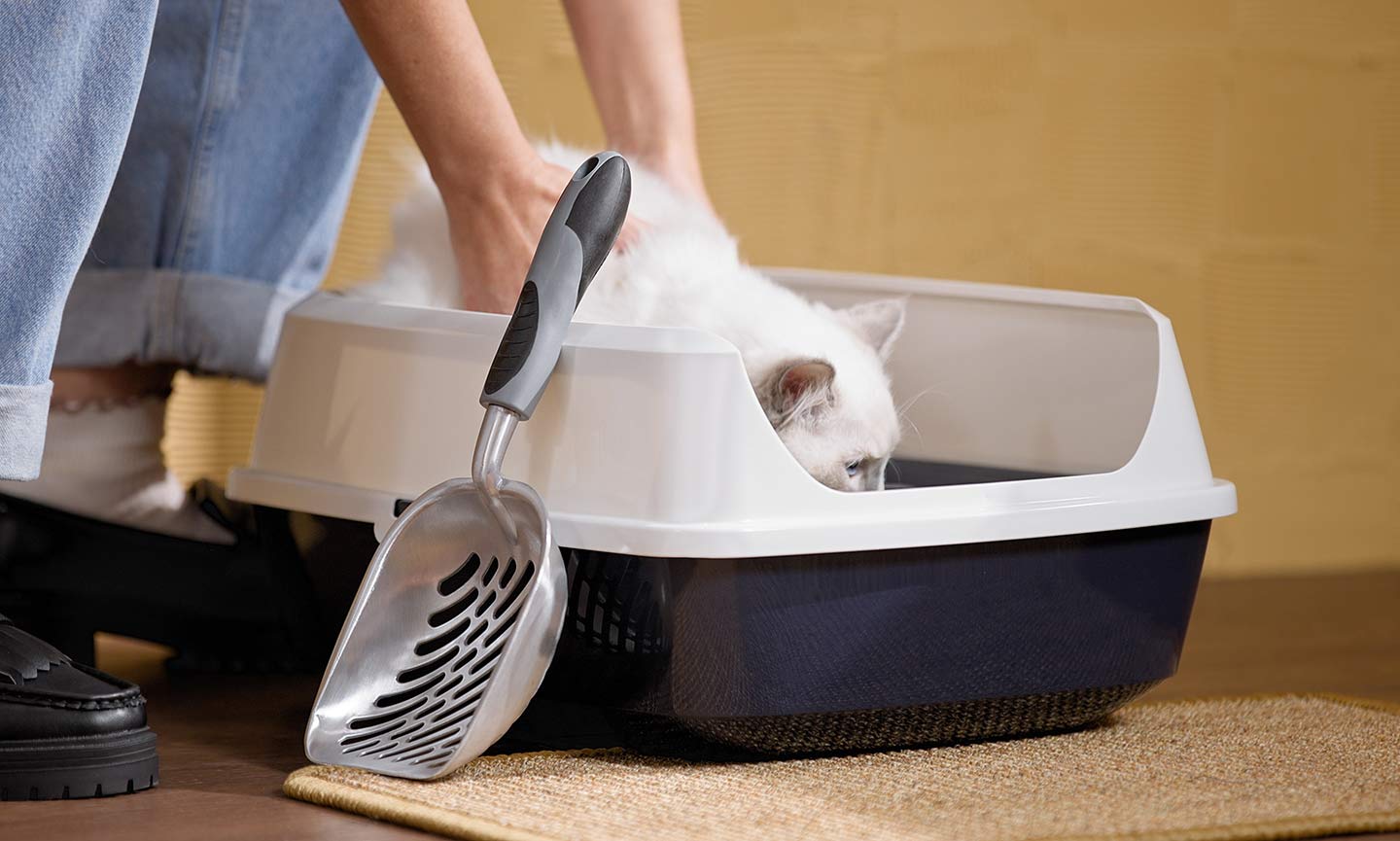
2 Show Your Cat the Litter Boxes
Take your cat to their litter box as soon as possible—it should be the No. 1 thing you do when you first bring them home. Continue to place them in the litter box a few times per day to help them remember where it’s located.
“You can gently place your kitten in the litter after meals and after they wake up, and perhaps scrape the litter a bit with your own fingers to let them know it's nice and diggable,” McMillan says. “You can also praise your kitten when they use the box, and maybe give a small treat afterward.”
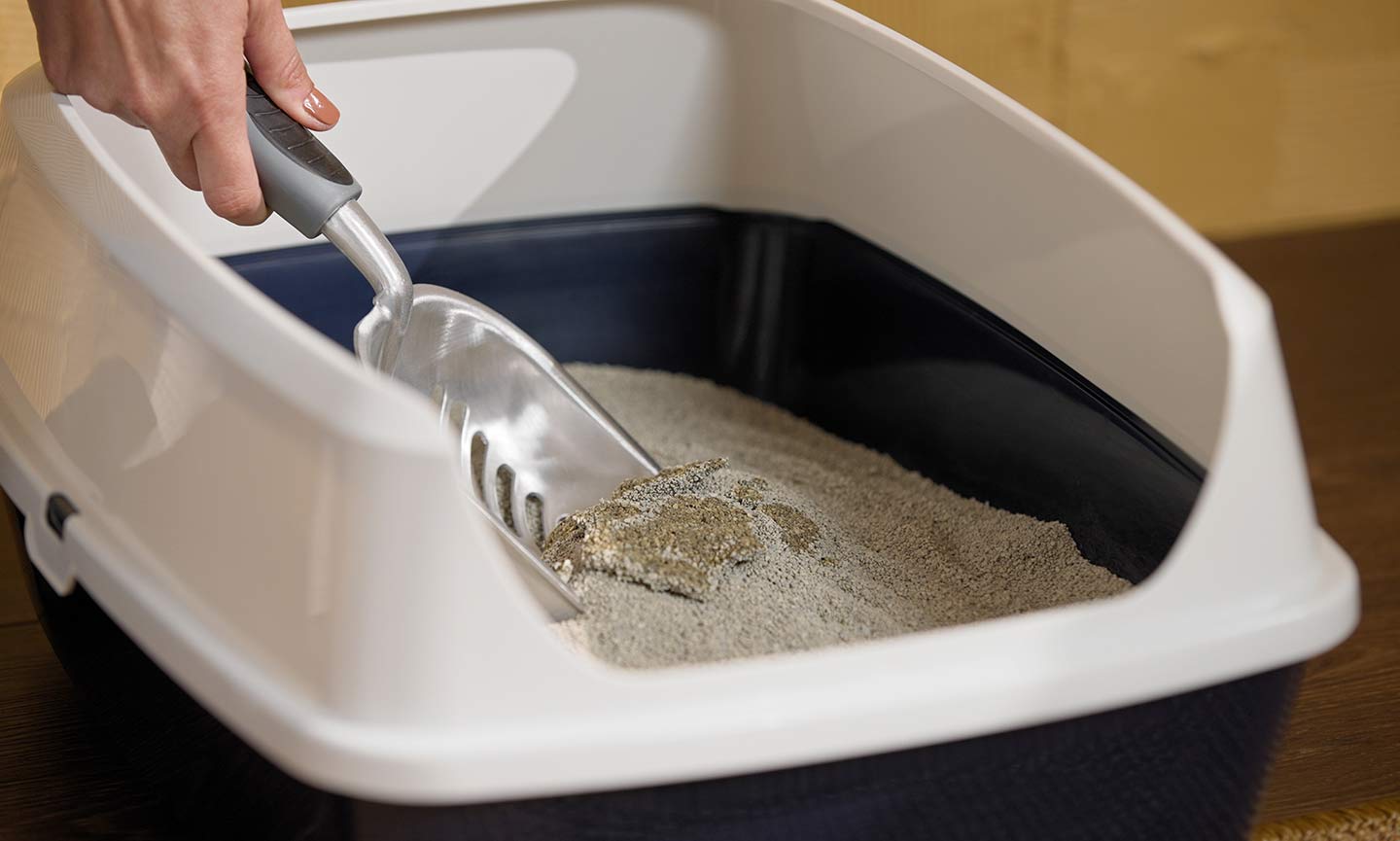
3 Scoop the Litter Box Once Daily
There’s a good chance that your kitten will use the litter box right away. To make sure they keep coming back, it’s important to scoop your litter box one or two times per day. Dirty litter boxes can be stressful for cats of all ages, including kittens, and can deter them from using it.
“Make sure the box is ultra clean, scooped regularly, and washed every one to four weeks depending on how dirty it gets,” says Dr. Cheryl Good, DVM, owner and veterinarian at Dearborn Family Pet Care in Dearborn, Michigan, and immediate past president of the North American Veterinary Community (NAVC).
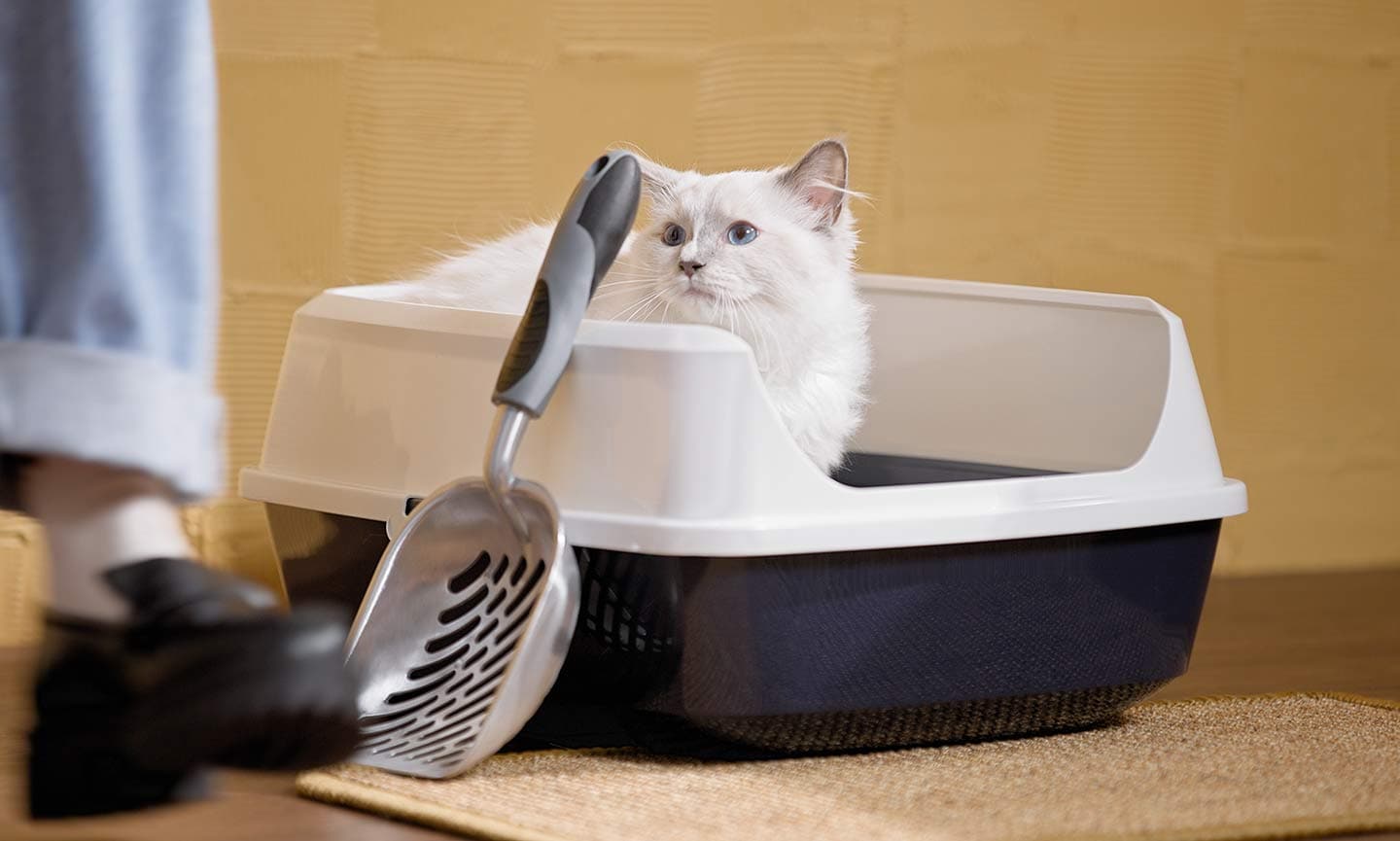
4 Be Patient
Your kitten may have a few accidents, so be patient with them as they learn the ropes. If your cat does go outside of the box, don’t scold them. They won’t understand why they’re being punished, and could even learn to be fearful of you as a result.
Cats tend to return to the same place repeatedly to do their business, especially if it smells like their waste. For that reason—and because you don’t want your home smelling like a dirty litter box—thoroughly clean up any accidents, ideally with an enzyme cleaner such as Nature's Miracle Cat Enzymatic Stain & Odor Remover that will remove their scent as much as possible.
What If My Kitten Still Won’t Use the Litter Box?
Kittens might not take to a litter box immediately. Patience is key, but if your kitten still won’t use it after a few days then it’s time to investigate and perhaps switch up your routine.
Some common reasons kittens won’t use a litter box include:
- Not having easy access to the box: Make sure that your kitten can easily enter and exit the litter box. If they have trouble stepping in or out, that could deter them from doing their business there.
- Not liking the location of the box: Is their litter box near a noisy household appliance? Not offering enough privacy? Maybe your cat just doesn’t like the color of the walls in the room where you put it. (Hey, cats are notoriously fussy.) Try troubleshooting with a different location for the litter box to see if it helps. If your cat has a favorite area of your home, try placing their litter box there to see if they’re more encouraged to go.
- Preferring a different type of litter: Did we mention that kittens can be fussy? That applies to their litter preferences, too. Experiment with non-scented, clumping versus non-clumping, and different materials to find one that works best for your cat. If your cat came from a shelter or breeder, you can also call them and ask which litter they used—if it worked for your kitten before, there’s a good chance it’ll work for them now.
- The box is too dirty: If the box hasn’t been cleaned in a while, your kitten might avoid it, so be sure to scoop daily.
- Other cats in your home are blocking their access: If you have multiple cats, add one or more litter boxes to help prevent bullying or guarding issues. “You may want to have Feliway diffusers in the area of the litter boxes to help if there are multiple cats in the house,” advises Dr. Good. “This will have a calming effect on the kitten.”
- Their aim is off: Sometimes kittens miss the box when they are first learning to use it. They’ll likely realize their mistake on their own, and reposition themselves the next time they use the box until they get it right.
If you’ve considered all the above and your kitten still won’t use the box, it’s possible there’s a medical issue, such as a urinary tract infection (UTI). Schedule an appointment with your veterinarian if the issue persists.
“If they are going right outside the litter box, in my experience, that is a sign that it hurts when they go there,” Galaxy says. “They're telling you that they know they're supposed to go there, but it hurts, so they'll go right outside of where they're supposed to be.”
Likewise, if your kitten has been using the litter box but suddenly stops, consult your veterinarian. This can also be a sign of an underlying medical issue.
For most kittens, the steps above are all it takes to become fully litter trained. By encouraging your kitten’s natural instincts, ensuring they have everything they need for success, and indulging any quirky preferences they may have, you and your cat are on your way to a lifetime of litter box success. Good luck!
Ashley Davidson contributed to this article.
Read More
Share:
